In the Young's double slit experiment a point source of λ=5000Å is placed slightly off the central axis as shown in the figure-6.127.
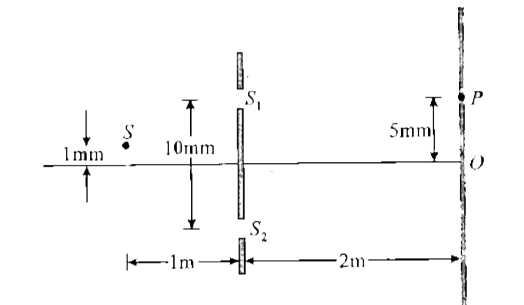
(a) Find the nature and order of the interference at the point P.
(b) Find the nature and other of the interference at O.
(c ) Where should we place a film of refractive index μ=1.5 and what should be its thickness so that maxima of zero order is obtained at O.
The correct Answer is:[(a)70th order maxima;(b)20th order maxima;(c)t=20μm, in front of S1]
Similar Questions
In Young's double-slit experiment, the point source is placed slightly off the central axis shown in Fig. 2.45.
a. Find the nature and order of the interference at point P.
b. Find the nature and order of the interference at point. O.
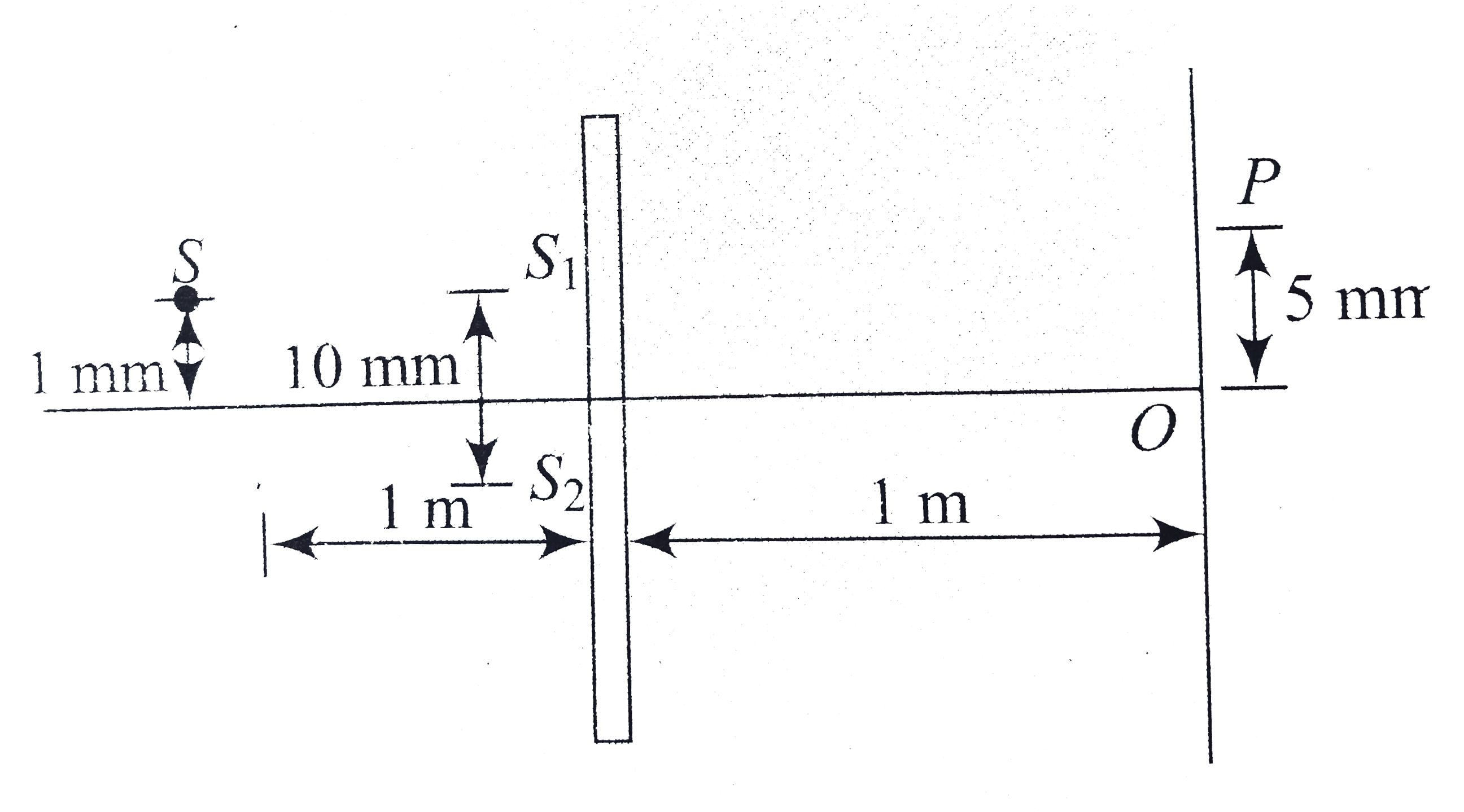
View SolutionIn Young's double-slit experiment, the point source is placed slightly off the central axis shown in Fig. 2.45.
a. Find the nature and order of the interference at point P.
b. Find the nature and order of the interference at point. O.

View Solution
Knowledge Check
In Young’s double-slit experiment, the pot source s is placed slightly off the central axis as. shown in fig. If Z=500 nm, then match the following.
Pick the correct option

 A(IV) (iii) (P)B(III) (iv) (Q)C(H) (i) (R)D(l)(ii)(S)
A(IV) (iii) (P)B(III) (iv) (Q)C(H) (i) (R)D(l)(ii)(S)In Young’s double-slit experiment, the pot source s is placed slightly off the central axis as. shown in fig. If Z=500 nm, then match the following.
Pick the correct option
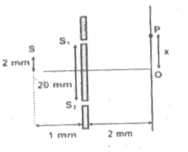
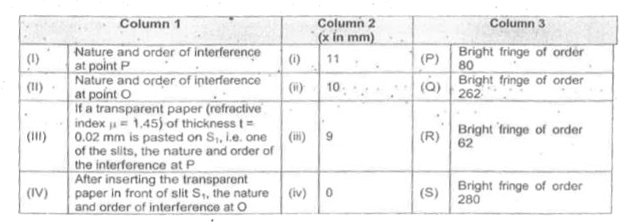 A(III) (i) (PB(ll)(iii) (R)C(I) (iv) (S)D(IV) (iy) (R)
A(III) (i) (PB(ll)(iii) (R)C(I) (iv) (S)D(IV) (iy) (R)In Young’s double-slit experiment, the pot source s is placed slightly off the central axis as. shown in fig. If Z=500 nm, then match the following.
Pick the correct option
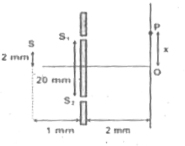
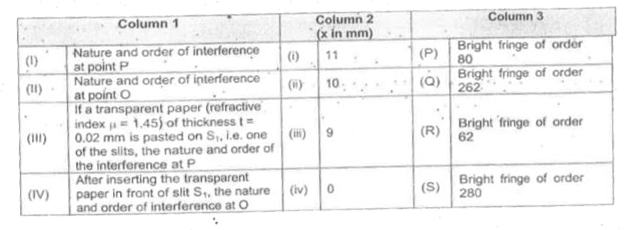 A) (I) (i) (S)B(ll)(iv) (P)C(III) (iv) (Q)D(IV) (iv) (S)
A) (I) (i) (S)B(ll)(iv) (P)C(III) (iv) (Q)D(IV) (iv) (S)
In Young's double slit experiment the point source is placed slightly off the central axis as shown in figure. The plane of slits (S1,S2) and screen are separated by a distance of 2m. The separation between the slits is 10 mm. The position of the slit above the axis is 1mm. if the wavelength λ=4000Å in the above arrangement
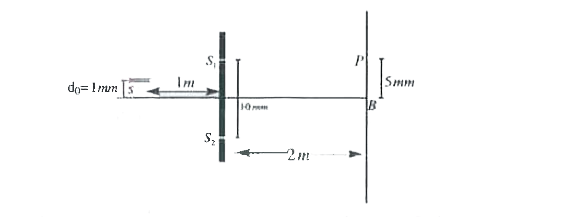
The thickness of the film in the above case is
View SolutionIn the YDSE, the monochromatic source of wavelength λ is placed at a distance d2 from the central axis (as shown in the figure), where d is the separation between the two slits S1andS2 .
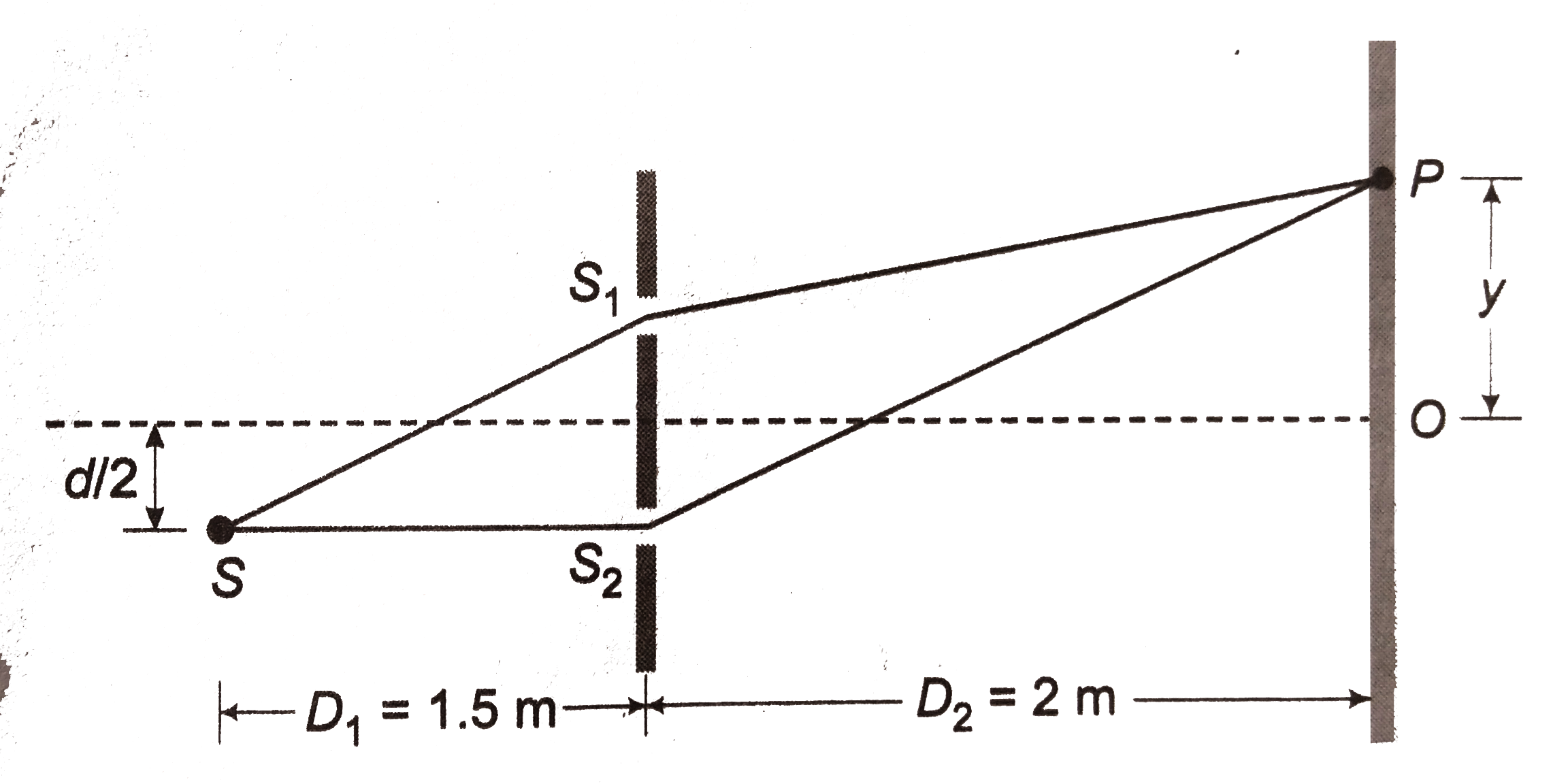
(a)Find the position of the central maxima.
(b) Find the order of interference formed at O.
(c)Now, S is placed on centre dotted line. Find the minimum thickness of the film of refractive indes μ=1.5 to be placed in front of S2 so that intensity at O becomes 34th of the maximum intensity.
(Take λ=6000Å,d=6mm.)
View SolutionIn the YDSE, the monochromatic source of wavelength λ is placed at a distance d2 from the central axis (as shown in the figure), where d is the separation between the two slits S1andS2 .

(a)Find the position of the central maxima.
(b) Find the order of interference formed at O.
(c)Now, S is placed on centre dotted line. Find the minimum thickness of the film of refractive indes μ=1.5 to be placed in front of S2 so that intensity at O becomes 34th of the maximum intensity.
(Take λ=6000Å,d=6mm.)
View Solution(i) In Young's double slit experiment the condition for (a) constructive and (b ) destructive interference at a point on the screen .
View SolutionIn Young's double slit experiment, the interference bright fringes are of:
View Solution
